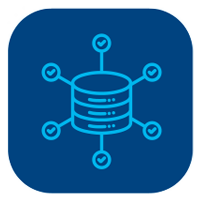Error: Contact form not found.





Marketing Mix Modeling (MMM) has been used by CPG and consumer brands for decades as one of the main tools for holistic marketing measurement.
Attribution gained popularity with the rise of digital marketing and soon became the preferred technique for digital-native and direct response (DR) brands for whom most or all of the user journey takes place online. However, signal loss due to increasing privacy regulations, iOS restrictions and cookie deprecation have altered the digital advertising landscape, making attribution significantly less effective and accurate than it used to be.
As DR advertisers re-evaluate their measurement methods, there is renewed interest in MMM as a
comprehensive solution analysing various factors impacting sales beyond traditional attribution. Advertisers also find value in MMM due to its ability to measure the impact of non-media drivers and comprehend cross-channel impact.
Over the last few years MMM has rapidly evolved in response to growing and changing needs. Traditional MMM was time and resource intensive and by extension slow and expensive. Now, new MMM solutions have evolved off the back of improving data flows and better algorithms leveraging automation and AI/ML techniques, making them much more suitable and accessible for diverse advertisers with varied marketing budgets and strategies.
Today’s MMM solutions can enable continuous measurement and optimization which is helping to deliver modelled results closer to the speed and granularity that advertisers have been used to getting from real-time user-level attribution e.g. Google Analytics. They provide DR advertisers with more frequent and granular insights aligned with their planning cycles for maximum actionability.
Daily level data is typically used for continuous model updates. Every week the model is updated with 7 new data points. A daily level model helps in capturing the weekday or weekend effects which can be represented in the model with a day of the week seasonality index thereby enhancing the overall model accuracy.
Performance marketing impact is typically short term in nature and is captured well through daily level models, keeping modelled impacts granular and near real time in nature. Overall predictive power of the model is enhanced further by accounting for daily level seasonality and making sure the decay effects are captured appropriately for various marketing activities.
In addition, refreshing these models on a continuous basis allows for continuous learning, with small adjustments to the model made to account for changes in advertising response so as to better reflect near real time budget planning activities.


Aggregated data exchange is automated between the advertiser and MMM platform through the use of secure cloud storage environments and ETL scripts

Fresh data is ingested into the MMM Platform in a continuous manner and supervised model updates attribute sales across all media channels automatically

Fresh modelled results are continuously available in the online MMM platform for analysis, simulation and optimisation by marketing analytics and media planning teams

DR-heavy advertisers can no longer rely solely on legacy attribution solutions which increasingly lack third party cookies and device IDs to stitch the digital journey together.
Even before signal loss, attribution methodologies did not allow for the untangling of true paid media effects from baseline consumer behaviour. While experiments using a control group would be able to answer the question “How many customers would have made a purchase even in the absence of advertising?” the results are often
‘in-platform’ and not ‘cross-platform’ and therefore are not useful for optimal budget allocation decision making.
MMM addresses various needs including measuring impact of media and non-media drivers such as pricing, trade promotions, macroeconomic factors, seasonality, competitor activity. It also aids cross-platform media planning and optimization and isolates true incrementality from base sales you would have got anyway, all while being privacy resilient and resilient to signal loss.
All DR-heavy advertisers can use MMM subject to 3 broad requirements.
You must have granular data (ideally daily) for sales, advertising spends and any other important drivers you wish to include in the model. The data should not only be granular but also be freeflowing, so that continuous fresh data can be fed into the model on a daily/weekly basis.
One of the outputs of MMM is to isolate baseline sales, which is the sales that would have happened anyway without additional media spend. Isolating the base (or organic) sales works best when an advertiser has achieved predictable levels of sales. For example, if you are a start-up growing exponentially in your first year it is hard to predict what sales are base versus what are driven by advertising. In that case, the outcomes of models need to be treated with caution and potentially calibrated with experiments for higher accuracy.
Having 12 months historical data when building the first model allows the model to understand and attribute correctly how seasonality impacts your business. If 12 months is not available, look back periods can be as little as 3 months when using daily data.

DR-heavy advertisers work at a very fast pace. Feedback on campaign performance is expected daily or weekly. So accurate positioning on what to use MMM results for versus other measurement types is crucial to gain the buy-in of your team who will implement the findings. The good news is that the latest MMM solutions can provide weekly updates and results based on daily data, making them both a strategic and tactical fit for all types of businesses.
Once you have assessed whether or not you meet the requirements to use continuous MMM, the next crucial step is choosing the right execution model based on several factors including data ecosystem, media mix complexity, scope, analytical resources, and desired frequency of insights.
If you do not have access to data science resources, have disparate data scattered across teams that takes significant effort to collect, or want to pursue a one-off project with custom consulting business questions, then working with a third-party vendor could be a better solution. Ensure that the vendor has expertise in your category or vertical and the country you want to model for. Some advertisers also prefer to get external validation of insights from a third-party vendor to drive internal decision making.
In-housing MMM can be done regardless of whether data is continuously available or not. MMM can be in-housed using either MMM SaaS solutions, like Analytic Edge’s Demand Drivers, or using open source MMM algorithms, such as Robyn. One thing to bear in mind when choosing this approach is to ensure that you have the marketing and data science resources internally who are skilled and experienced enough in MMM to build and maintain the models and importantly can translate the results into practical recommendations for the wider marketing and planning team.
If your business satisfies the above requirements, then you are perfectly positioned to take advantage of modern, continuously updated MMM models. Data would be shared continuously with Analytic Edge, with models updated weekly and continuously available online for analysis and media spend optimisation.
Innovation in MMM has created more accessible solutions for DR advertisers

Before you finally get started on your MMM journey, there are a few important things to get in place to ensure smooth execution and maximum impact from the project.
Make sure you’ve secured sponsorship and aligned on the opportunity and the messaging at several rungs of the organisation starting with the C-Suite. In addition, it’s important to ensure you have the commitment on the investment required for MMM and engagement from all teams who will be involved in it.
Once your project is signed off, and you’ve opted for your preferred execution model (NextGen, In-House/ MMM SaaS or Full Service MMM), the final critical step is ensuring you have the right team in place to implement MMM. The team and project stakeholders must straddle 3 key skill sets – data science and analytics, marketing, and commercial.

These are the key questions that you want to answer with the MMM project. Getting this right is important as they will influence all the other factors that go into an MMM, such as the variables and model structure. These example MMM hypotheses are related to media optimisation and laydown. You can develop more detailed ones tailored to your business.
Setting the expectation for what additional value and insights the MMM workstream will deliver is crucial. It is recommended that you pre-align with all stakeholders about how MMM results will be delivered alongside existing reporting and measurement benchmarks.
With these critical pieces in place, it’s time to get into execution.
Successful MMM implementation requires defining business priorities, scoping the study, ensuring data readiness, securing alignment, and engaging a multidisciplinary team. Iterative improvement is essential, as MMM is a journey and not a one-time
solution. Collaboration between data science, marketing strategy, and business insights is crucial. Adapting the MMM tool to organizational processes and goals is key. Integrating MMM recommendations and asking pertinent questions helps optimize the study’s value and relevance.

The first and most important step to getting MMM right is defining your business priorities. A good way to go about this is by using the following framework.

Data readiness is about assessing how data ready you are as an organization to embark on a continuous MMM journey. Do you have a data infrastructure in your organisation? If yes, is it efficiently managed? Are data feeds automated? What is the frequency of data collection for sales, app downloads, media spend and other important variables? Typically for MMM you need 3 broad categories of data.
This is usually sales value or volume for traditional offline or online businesses. For DR or app-based businesses it could be sales, transactions, orders, app downloads, app installs or app revenue.
This includes media spends, impressions and GRPs by media/ media channel and within media channel by objective level (e.g. app installs, conversion, brand, reach etc.). The more granular the data, the more accuracy is built into the models.
This would be other important drivers of sales like events, holidays, range, pricing, promotions and other factors as deemed relevant like weather and inflation.
The latest continuous MMM solutions use ETLs and APIs to automatically ingest business and media data from multiple sources. This allows for faster and more frequent model updates and insights in line with DR advertisers’ planning cycles.
 CASE STUDY
CASE STUDY


Align with marketing, commercial and data science teams to get buy-in and allocate responsibilities. Any successful program will typically have a senior sponsor who will engage with and commission the work. This person will usually be in the marketing team with titles like VP Marketing, Head of Media Investment, Head of Digital Marketing. It could also be a marketing analytics leader like a Marketing Analytics Team Lead or Director of Data and Analytics. There will also be a project manager/POC who drives the program every day to ensure success. This person could have the title of Head of Media, Strategy and Planning, Head of Performance Media, Marketing Analytics Lead or Data Science
Manager. In addition, you will need someone to assist with efficient collection and exchange of impressions and spend data. This person will typically come from the data analytics or data science team. The team size and skills would vary depending on your chosen execution model. Internal alignment is key to drive successful execution and application of the MMM. For instance, DR-heavy advertisers like app businesses have UA teams whose incentives are tied to the MMP reporting. To push MMM, there needs a pre-alignment with the UA lead or even the CMO to try the new MMM solution to grow the business. Involving finance is also a great idea to get the right stakeholders in the room.
MMM not only provides media mix recommendations but also non-media recommendations e.g., how promotions and pricing impact sales, the role of affiliates, how much in-store distribution contributed to sales, the true impact of seasonality etc. Therefore, the findings of the MMM can be used to inform the business on both marketing and nonmarketing decisions in order to take relevant action.
Results from the MMM can also be finetuned by calibrating using other source of “ground truth” like Lift Experiments. Lift Experiments provide very specific results within media channels, and these results can be compared with MMM and used to calibrate the model.
Lift studies closely aligned to the MMM scope are the most useful for calibration purposes. By incorporating these results, it is possible that the model can be made even more accurate. Experiment results that complement MMMs also generate more confidence in the MMM recommendations as they are supported by other sources of ground truth.
Integrate MMM recommendations even it seems hard upfront. DR-heavy advertisers are performance driven and typically review campaign performance on a weekly basis. Therefore, in-flight optimisation of media spends is key to unlock growth. MMM insights can help decide if a campaign should be scaled up with more spending, or if spending should be maintained or reduced depending on the results.
If needed, engage in further deep dive studies on long term effects, flighting, frequency, promotions and pricing.

If you are a DR advertiser and have completed an MMM, the biggest question you probably have is ”What do you need to do to ensure that MMM will have an organizational impact?” Here are a few important things to remember.

First, remember that MMM is a continuous process and not a one-off exercise. MMM models try to explain how varied factors (media, promotions, seasonality, pricing, range, macroeconomic factors etc.) impacted business outcomes in the past and predict how they might in the future. Initial models may not be perfect and will need to be finetuned. It is important to set this expectation with all stakeholders.

MMM offers strategic and tactical value to teams across your organization and needs buy-in from different teams. For example:
UA teams can use MMM insights, often calibrated or validated with the results of experiments or attribution, to optimize their media budget daily or weekly.
Marketing can leverage MMM for the more strategic perspective it provides. Marketing typically has a broader view covering different product and service lines. It can also help CMOs make a stronger case for increased investment in marketing vis-à-vis other competing requests for the same budget.
The CFO’s office can use MMM to take a macro view of resource allocation and maximize ROI on all spends across functions. MMM can be a valuable resource here as it provides data-based ROI information on marketing spends and investments. MMM can help not only to measure but also maximize ROI of all marketing investment.

So, involve all relevant teams from the start – from defining business challenges, articulating the key questions to be answered, identifying data sources and assessing data readiness, through to data collection, review of first results and finetuning the model.
Every organization will have multiple tools to aid decision making. Marketing Mix Modelling (MMM) helps to measure the contribution of offline and online marketing elements and external factors giving you a modelled holistic view on the incremental drivers of your Key Performance Indicator (Sales). This holistic view makes it a great tool for strategic decision making but requires thorough data collection and historically has taken time to build.
Lift Experiments use randomised control testing to identify the causal (incremental) impact of a particular campaign or channel by comparing two groups of people: a test group (who have seen the ads) and a control group (who have not seen the ads) but are limited to assess within a platform, such as Meta.
Finally, Attribution modelling uses tracking data to assign value to various digital advertising touchpoints (search, PPC, social, etc) during a conversion journey. Its major benefit is that it is real-time and granular and can deliver insights on a daily or even an hourly basis and because
of this is popular amongst digital native and DR advertisers. However last-touch Attribution models fail to measure incrementality and face continued challenges by industry privacy regulation changes such as the California Consumer Protection Act (CCPA) and General Data Protection Regulation (GDPR) which have decreased the quality of data feeding insights.
Given the above, it is important to collectively understand and decide how MMM will fit into your existing set of tools and how the organization will use MMM insights.
Continuous MMM offers easy, automated and always-on reporting and simulation for insights which can be aligned with your planning cycles for actionability and maximum impact. Integrated interactive dashboards make insights easy to understand, with the ability to drill down for more granular insights and recommend automatic budget reallocation suggestions. These unique capabilities can be used by multiple stakeholders to optimize media mix for campaigns and maximize ROI.

Once MMM settles in as a trusted tool, it’s a great source of hypotheses that can be tested and cross validated. Frequent interactions with the business on model outcomes can provide ideas and hypotheses for strategy improvements. This is the way to truly embed a test and learn culture in an organization which is equipped with a holistic 360 degree measurement set up. This in turn paves the way for key functions in the organization – branding, user acquisition, LTV, pricing, product – to work together and leverage it for better strategies in their respective areas.
Melia Hotels International, a Spanish hotel chain with a global presence, used NextGen MMM to optimize its advertising ROI and drive optimal budget allocation across all media channels.
The Analytic Edge team created MMM models for Melia with daily aggregate level data to analyze the relationship between key business drivers and sales. Daily data was used, and models refreshed weekly with the latest 7 days data points.
Through collaboration with Meliá Hotels International, a significant 36% increase in Return on Advertising Spend (ROAS) was observed over a one-year period.
This work highlights the potential of MMM to effectively optimize advertising impact in an era where user consent takes precedence.

As the digital advertising landscape undergoes significant shifts, the journey towards adopting and integrating continuous Marketing Mix Modelling (MMM) presents a strategic opportunity for DR-heavy advertisers to enhance their measurement capabilities and optimize marketing investments.
The evolution of MMM solutions leveraging automation and AI/ML techniques has made them more accessible than ever before, and suitable for diverse advertisers with varying budgets and strategies. Continuous MMM offers the advantage of providing near real-time, granular insights aligned with fast-paced performance marketing environments.
Whether through continuous NextGen MMM, in-house solutions/SaaS, or fullservice models, advertisers can tailor their approach based on factors specific to their business such as data ecosystem, analytical resources, and desired frequency of insights.
By leveraging MMM alongside other measurement tools like Lift Experiments and Attribution Modelling, advertisers can gain a holistic view of marketing effectiveness while remaining resilient in the face of privacy regulations and signal loss.
Ultimately, continuous NextGen MMM empowers advertisers with actionable insights, enabling them to make informed decisions to drive profitability and growth in an ever-evolving digital landscape.

Analytic Edge is a global analytics company that leverages technology and advanced analytics to help companies make data-based marketing decisions. The company’s flagship platform Analytic Edge Qube offers a suite of marketing analytics solutions with a Software as a Service (SaaS) model. The solutions include DemandDriversTM for always-on Marketing Mix Modeling (MMM), SynTestTM for AI powered Test and Learn, PriceSenseTM for pricing and promotion analytics, and PowerViewTM for analytics visualization. Analytic Edge works with clients across industry verticals such as e-commerce, mobile apps, gaming, consumer packaged goods, retail, automotive and many others. The company has offices in Singapore, India, US, Mexico, Brazil, UK, China, Japan, South Korea, UAE and Australia.